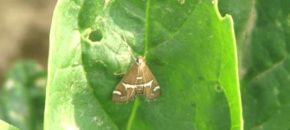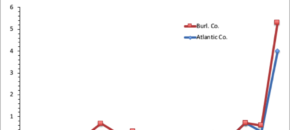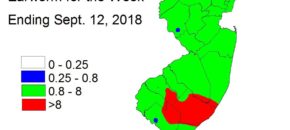Anthracnose fruit rot has been found on pumpkin. Bacterial stalk rot in sweet corn has been reported. Downy mildew has been reported in bok choy. Cole crops, as well as leafy greens, need to be scouted on a regular basis and preventative sprays applied as long as wet weather continues. Pepper anthracnose has been reported. If […]
Continue reading...IPM Update 09/26/2018

There will be no maps for this edition of the IPM Update. Sweet Corn State-wide, European corn borer and fall armyworm have declined in the traps. There has been little field activity for either moth. Corn earworm Corn earworm populations have declined, but based upon blacklight information, most areas of the state will need to […]
Continue reading...Webinar on Best Practices for Pesticide Aerial Application

Register for September 27 Webinar on Best Practices for Pesticide Aerial Application EPA is hosting a webinar titled “Best Practices for Aerial Application” on September 27, 2018, from 2 – 3:30 pm ET. This webinar is tailored for growers, pesticide applicators, pest management professionals, and other interested stakeholders who work in crop […]
Continue reading...Fruit IPM for 9/19/18

Apples: Brown Marmorated Stink Bug (BMSB): BMSB presence is spotty and still much higher than it was earlier in the summer. Now that apples (and pears) are the only fruit present for BMSB to feed on, growers must have a program to address this pressure.
Continue reading...Vegetable Disease Update – 9/18/18
Cucurbit downy mildew. All cucurbit growers should scout their fields on a regular basis and inlcude a downy mildew specific fungicide to their weekly maintenance sprays. The 2018 FRAC Table for Cucurbit Downy and Powdery Mildew Control in the mid-Atlantic Region can be found and downloaded for FREE here and is essential for developing control strategies for both diseases. […]
Continue reading...IPM Update 09/12/18

Sweet Corn European corn borer (ECB) moth catches remain low. Feeding signs in whorl corn are rare. There will be no map in this edition. Second generation feeding is often obscured by fall armyworm (FAW) feeding. Once plants hit full tassel, any ECB larvae present will move downward on the stalk and re-enter the plant near […]
Continue reading...